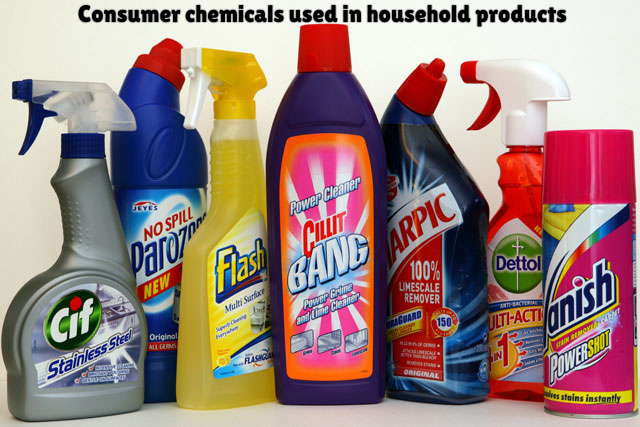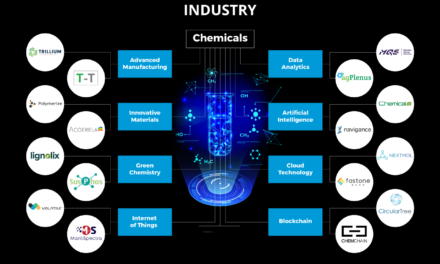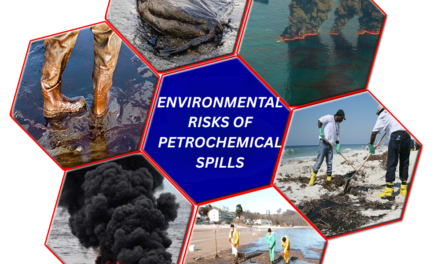The most popular types of consumer chemicals used in household products are those that serve specific functions like cleaning, disinfecting, deodorizing, and enhancing product performance. Here are some of the key categories:
1. Surfactants (Detergents and Cleaners)
- Role: Surfactants reduce the surface tension between water and dirt, making it easier to remove grime and stains.
- Examples: Sodium lauryl sulfate (SLS), sodium laureth sulfate (SLES), and alkyl polyglucoside (APG) are commonly used in cleaning products, dish soaps, laundry detergents, and shampoos.
2. Disinfectants and Antiseptics
- Role: These chemicals kill or inhibit the growth of harmful microorganisms like bacteria, viruses, and fungi, helping to sanitize surfaces and prevent infections.
- Examples: Bleach (sodium hypochlorite), hydrogen peroxide, and quaternary ammonium compounds (quats) are frequently used in household disinfectants, surface cleaners, and sanitizers.
3. Fragrances
- Role: Fragrances are added to household products to provide a pleasant smell and mask undesirable odors.
- Examples: Synthetic and natural essential oils (e.g., lavender, citrus, and floral scents) are commonly found in air fresheners, laundry detergents, and cleaning products.
4. Solvents
- Role: Solvents dissolve other substances and are used to clean, degrease, or dissolve stains.
- Examples: Isopropyl alcohol, acetone, and ethanol are found in products like glass cleaners, paint removers, and nail polish removers.
5. Acids and Bases
- Role: Acids and bases are used for cleaning, descaling, and removing mineral deposits.
- Examples: Citric acid (found in many descaling agents), acetic acid (vinegar), and hydrochloric acid (used in some bathroom cleaners) are common in household cleaning products.
6. Enzymes
- Role: Enzymes break down specific types of stains, such as protein-based stains (e.g., blood, food) or fat-based stains.
- Examples: Protease, lipase, and amylase enzymes are often included in laundry detergents, carpet cleaners, and stain removers.
7. Bleaching Agents
- Role: Bleaching agents whiten or brighten fabrics and remove stains.
- Examples: Sodium hypochlorite (household bleach) and hydrogen peroxide are common in laundry detergents, surface cleaners, and mold removers.
8. pH Adjusters
- Role: pH adjusters maintain the desired pH level in cleaning products to optimize their effectiveness and prevent damage to surfaces.
- Examples: Sodium hydroxide (lye), citric acid, and sodium bicarbonate (baking soda) are used to balance pH in products like oven cleaners, drain openers, and household cleaners.
9. Stabilizers and Preservatives
- Role: Preservatives prevent the growth of bacteria, mold, and yeast in liquid products, extending their shelf life.
- Examples: Methylisothiazolinone (MIT), phenoxyethanol, and formaldehyde releasers are commonly found in household products like cleaners, lotions, and cosmetics.
10. Fabric Softeners
- Role: These chemicals reduce static electricity, soften fabrics, and make them more pleasant to the touch.
- Examples: Cationic surfactants like quaternary ammonium compounds are used in fabric softeners, dryer sheets, and laundry detergents.
11. Polymers and Thickeners
- Role: Polymers and thickeners are used to control the viscosity or thickness of household products, improving consistency and performance.
- Examples: Hydroxyethylcellulose, xanthan gum, and polyacrylate are found in products like gel cleaners, shampoos, and dishwashing liquids.
12. Antifungal and Antibacterial Agents
- Role: These chemicals are used to prevent the growth of mold, mildew, and bacteria in household products and on surfaces.
- Examples: Triclosan, silver ions, and zinc pyrithione are commonly included in mold and mildew removers, laundry detergents, and surface cleaners.
13. Water Softening Agents
- Role: Water softeners remove minerals like calcium and magnesium that can cause hard water, improving the effectiveness of soaps and detergents.
- Examples: Sodium tripolyphosphate and sodium carbonate are used in dishwasher detergents and laundry detergents.

















